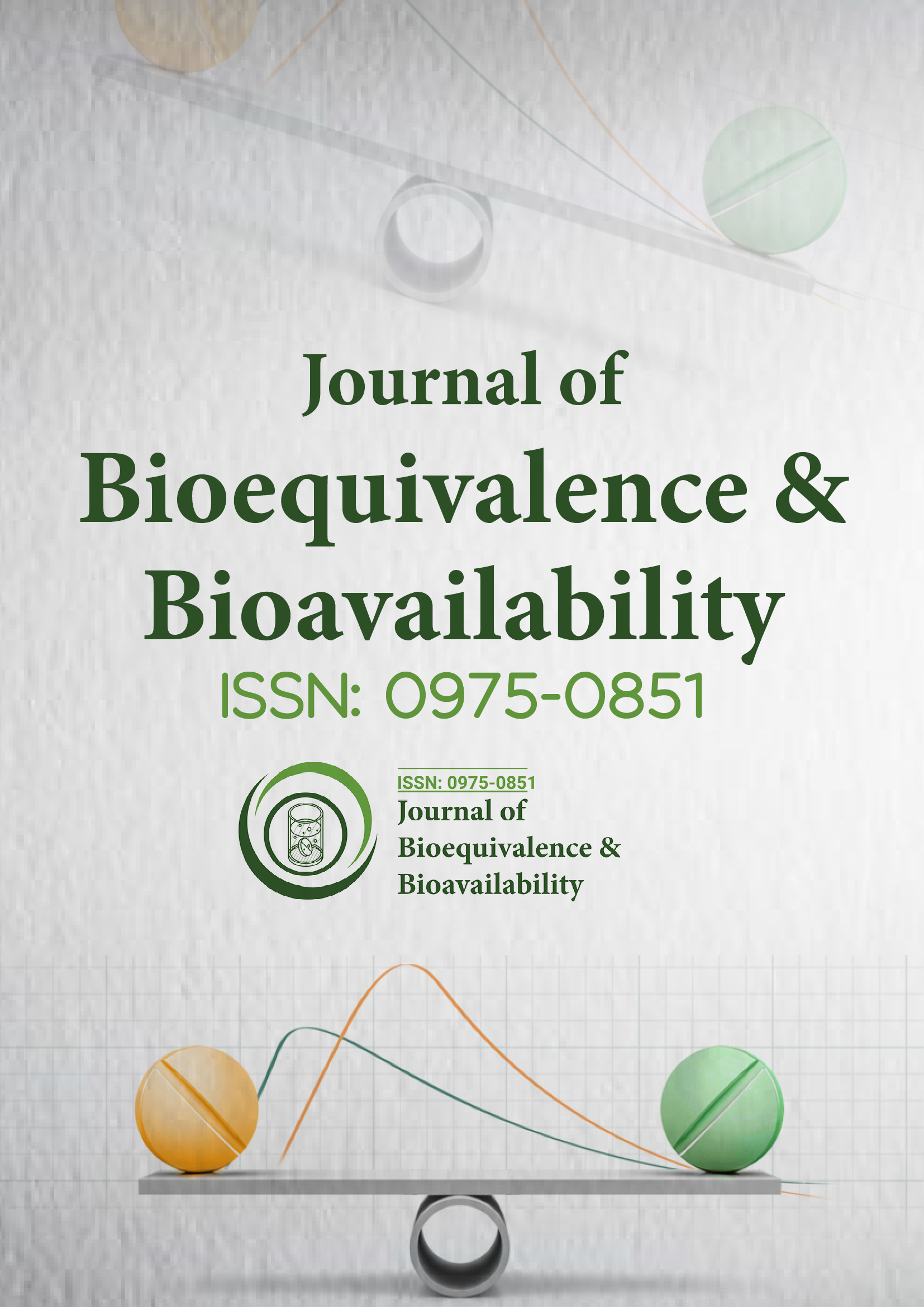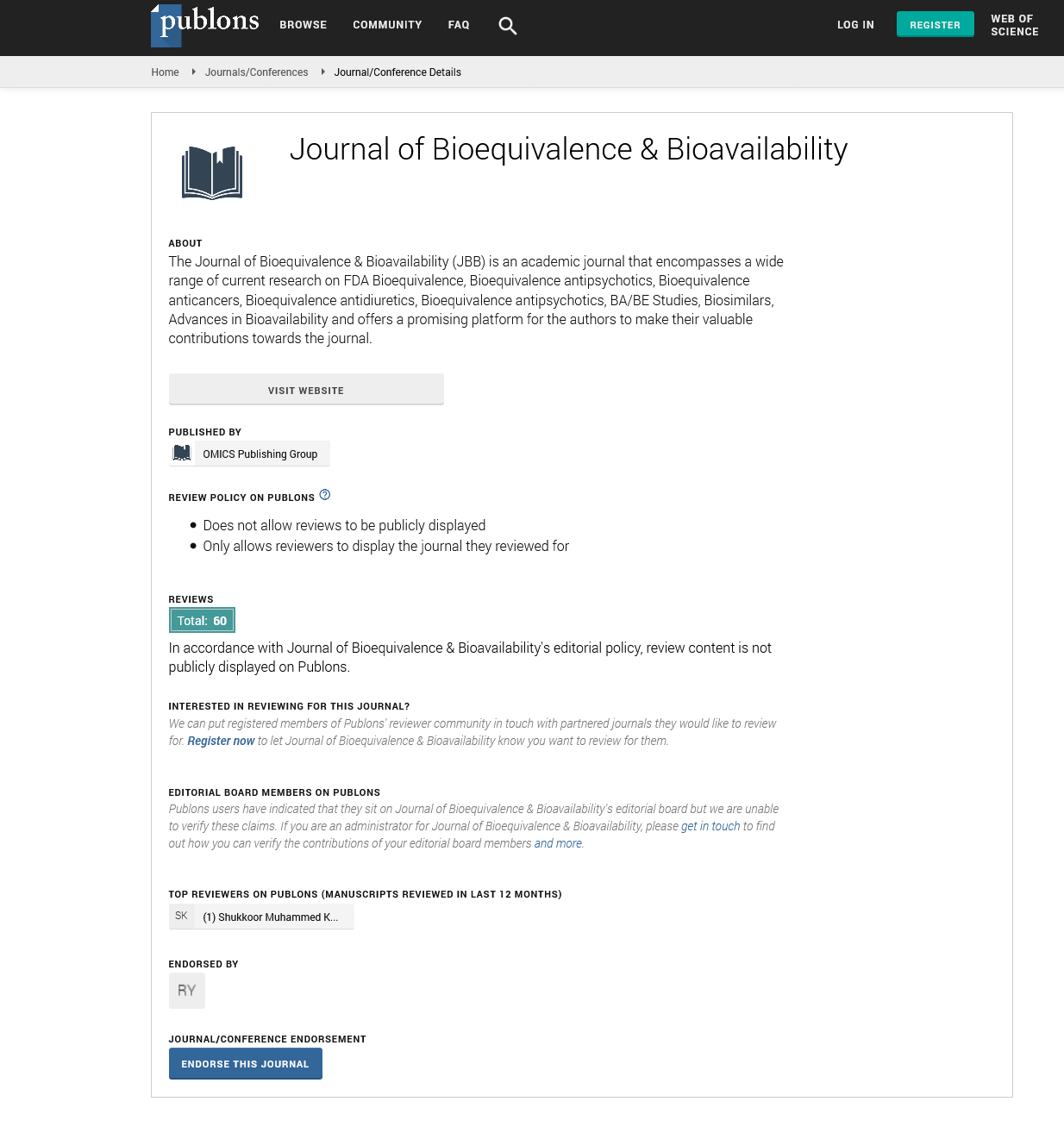Indexed In
- Academic Journals Database
- Open J Gate
- Genamics JournalSeek
- Academic Keys
- JournalTOCs
- China National Knowledge Infrastructure (CNKI)
- CiteFactor
- Scimago
- Ulrich's Periodicals Directory
- Electronic Journals Library
- RefSeek
- Hamdard University
- EBSCO A-Z
- OCLC- WorldCat
- SWB online catalog
- Virtual Library of Biology (vifabio)
- Publons
- MIAR
- University Grants Commission
- Geneva Foundation for Medical Education and Research
- Euro Pub
- Google Scholar
Useful Links
Share This Page
Journal Flyer

Open Access Journals
- Agri and Aquaculture
- Biochemistry
- Bioinformatics & Systems Biology
- Business & Management
- Chemistry
- Clinical Sciences
- Engineering
- Food & Nutrition
- General Science
- Genetics & Molecular Biology
- Immunology & Microbiology
- Medical Sciences
- Neuroscience & Psychology
- Nursing & Health Care
- Pharmaceutical Sciences
Open source software for comparison of dissolution profiles
9th World Congress on Bioavailability and Bioequivalence
April 16-18, 2018 Dubai, UAE
Aleksander Mendyk and Jakub Szlek
Jagiellonian University Medical College, Poland
ThothProâ?¢, Poland
Scientific Tracks Abstracts: J Bioequiv Availab
Abstract:
Statement of the Problem: Dissolution testing has become standard tool for pharmaceutical industry both in quality control and product development. For generic companies it is a regulatory requirement to demonstrate similarity of dissolution profiles between reference product (R) and the generic product candidate (T). Several methods of dissolution profiles comparison could be classified into two main groups: (1) Model based and (2) model independent. Application of any comparison method requires software to be developed for this purpose. This could be in-house, commercial or open source. We propose open source software for calculation of FDA similarity factor (f2) and model based comparison of dissolution profiles. Methodology: R statistical environment was chosen to write scripts and GUI (Shiny package). Bootstrap based bias corrected and accelerated confidence interval (BCa) was implemented for f2. In case of model based comparison, a method of Mahalanobis distance was chosen with Hotelling T2 test to determine similarity region for two dissolution curves. A multivariate statistical distance (MSD) for the raw dissolution profiles was also considered for the curves comparison. Findings: Software was published on the sourceforge.net server under GNU GPL v3 license meaning that it is free of charge both for private and professional use. Due to the portability of R environment this software is OS-independent and was successfully tested under various Windows and Linux environments. Conclusion & Significance: Implementation of BCa allows using f2 for dissolution profiles comparison even when RSD exceeds 10% (20% at the first time point) and MSD is an alternative of direct curves comparison as per relevant EMA/FDA guidelines. Model based methods are commonly used for second opinion when inconclusive or borderline results of f2 analysis were found. Thus, both packages enhance tooling for dissolution profiles comparison in difficult cases.
Biography :
Aleksander Mendyk is an expert in application of artificial and computational intelligence methods in pharmaceutical sciences, in vitro in vivo correlations development and bioequivalence assessment. With his background as a Pharmacist and with a Programmer experience he is a Software Developer and Programmer both in open source and commercial applications. He is currently employed in the Department of Pharmaceutical Technology and Biopharmaceutics, Faculty of Pharmacy, JUMC, Cracow, Poland and in the software company ThothPro™, Gdansk, Poland.
Email:aleksander.mendyk@thothpro.com

